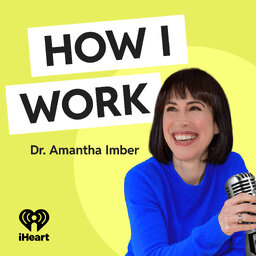The decision-making traps you fall into every day: and how Jake Knapp avoids them
Ever wonder if the advice you’ve been following is actually holding you back? What if playing by the rules is the very thing keeping you stuck?
Jake Knapp knows a thing or two about breaking the mold. A designer, investor, and New York Times bestselling author, Jake’s books have been translated into over 20 languages, helping teams around the world rethink how they work. He’s helped over 300 startups bring new products to market—including powerhouses like One Medical, Uber, and Slack. Before co-founding the venture firm Character Capital, he was a leader at Google, where he created the groundbreaking Design Sprint process, played a key role in building Gmail, and co-founded Google Meet.
In this episode, Jake and I dive into:
- Why every day is an experiment—and how you can apply this mindset to make better decisions
- His powerful Magic Lenses framework for cutting through complexity and making smarter choices
- A radical way to rethink meetings that could save you hours each week
- The concept of leaving money on the table—and why it might actually be the smartest move you can make
- Jake’s top three game-changing tools for productivity, note-taking, and video calls
If you’ve ever felt overwhelmed by decision-making or struggled to cut through the noise of endless choices, Jake’s insights will give you a fresh, structured way to approach work, creativity, and life. His frameworks aren’t just for startups—they’re for anyone who wants to make smarter, faster, and more intentional decisions.
Key Quotes:
- “Oversharing doesn’t build trust, it actually undermines trust.”
- “Every time you get feedback, you have a choice: Is this from someone I value? Is it useful? And what do I do with it?”
- “Leaving money on the table isn’t always a bad thing—sometimes, it’s the smartest decision you can make.”
Connect with Jake on LinkedIn, X (Twitter), or his website and check out his latest book Click here.
Try out the tools Jake swears by: Fathom and reMarkable
My latest book The Health Habit is out now. You can order a copy here: https://www.amantha.com/the-health-habit/
Connect with me on the socials: Linkedin (https://www.linkedin.com/in/amanthaimber)
Instagram (https://www.instagram.com/amanthai)
If you are looking for more tips to improve the way you work and live, I write a weekly newsletter where I share practical and simple to apply tips to improve your life. You can sign up for that at https://amantha-imber.ck.page/subscribe
Visit https://www.amantha.com/podcast for full show notes from all episodes.
Get in touch at amantha@inventium.com.au
Credits:
Host: Amantha Imber
Sound Engineer: The Podcast Butler
 How I Work
How I Work


